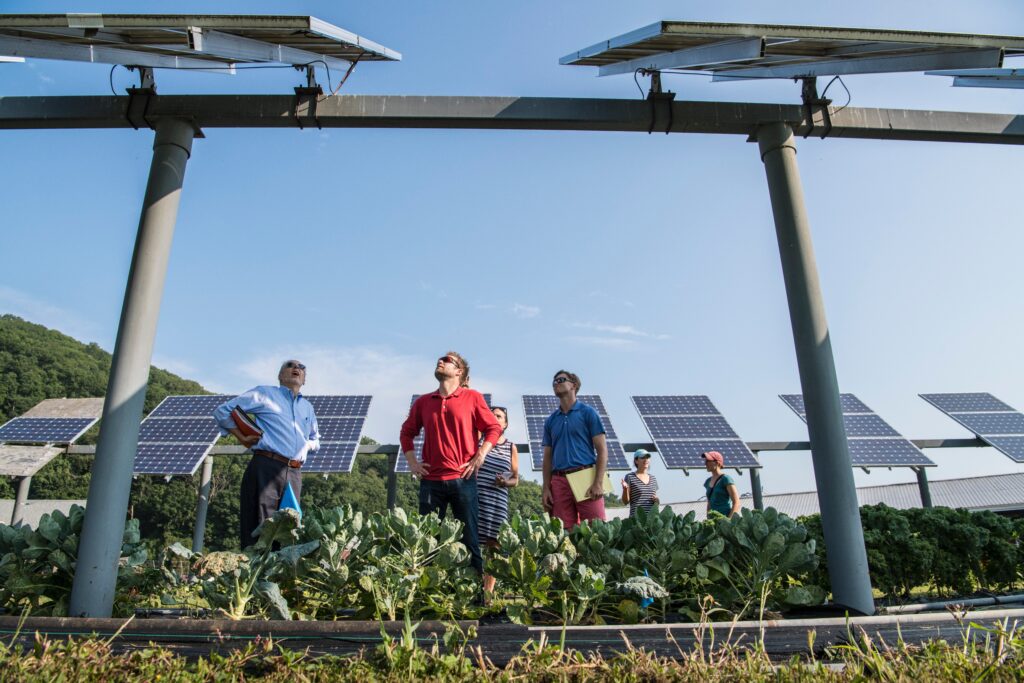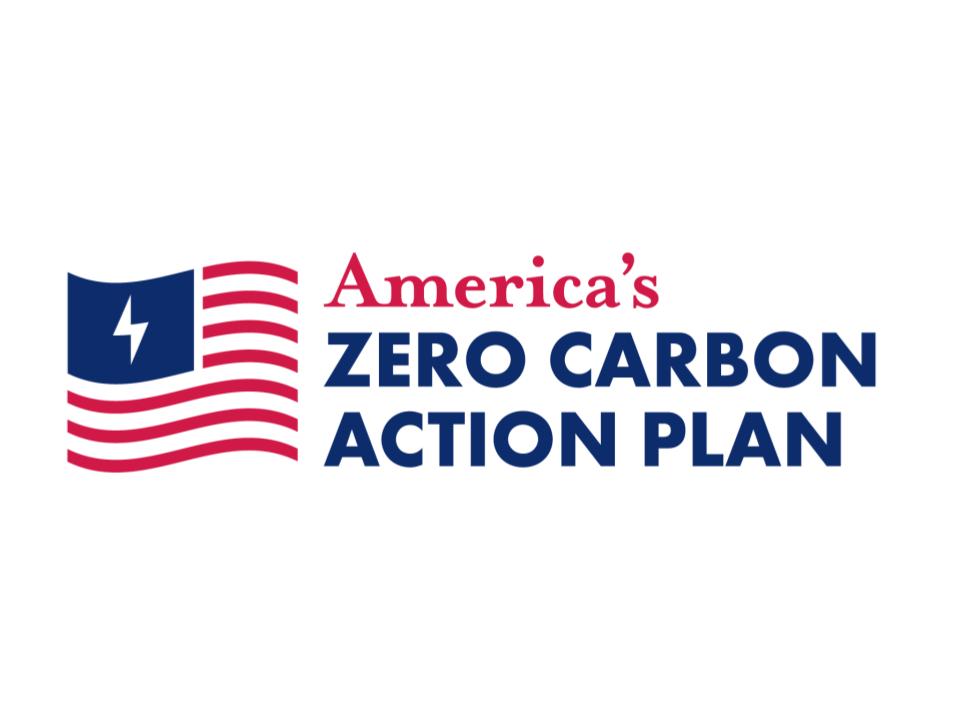In order to achieve zero carbon emissions, the US will need a plan. SDGPI is part of a coalition of the nation’s leading experts who have laid out the path forward to reach zero carbon emissions in the United States by 2050. Watch the Launch Read the Report Climate change represents a profound policy challenge to America and the world – requiring a response at a sweeping scale and with unprecedented speed centered on remaking the energy foundations of…
SDG 12
Worldwide material consumption has expanded rapidly, as has material footprint per capita, seriously jeopardizing the achievement of Sustainable Development Goal 12 and the Goals more broadly. Urgent action is needed to ensure that current material needs do not lead to the overextraction of resources or to the degradation of environmental resources, and should include policies that improve resource efficiency, reduce waste and mainstream sustainability practices across all sectors of the economy.
Recent research at the School of Global Policy and Strategy
In order to achieve zero carbon emissions, the US will need a plan. SDGPI is part of a coalition of the nation’s leading experts who have laid out the path forward to reach zero carbon emissions in the United States by 2050. Watch the Launch Read the Report Climate change represents a profound policy challenge to America and the world – requiring a response at a sweeping scale and with unprecedented speed centered on remaking the energy foundations of…
In order to achieve zero carbon emissions, the US will need a plan. SDGPI is part of a coalition of the nation’s leading experts who have laid out the path forward to reach zero carbon emissions in the United States by 2050. Watch the Launch Read the Report Climate change represents a profound policy challenge to America and the world – requiring a response at a sweeping scale and with unprecedented speed centered on remaking the energy foundations of…
The Regional Decarbonization Framework (RDF) anchors the San Diego region in emerging best practices from across the nation and globally. It charts science–based, feasible pathways toward expeditious deep decarbonization, proposing a paradigm shift in our local economy. The scale and pace of this effort will require partnerships between public and private sectors, particularly, business, labor and environmental communities. The input from these numerous stakeholders not only shaped the RDF itself, but initiated many of those collaborative efforts needed for…
In order to achieve zero carbon emissions, the US will need a plan. SDGPI is part of a coalition of the nation’s leading experts who have laid out the path forward to reach zero carbon emissions in the United States by 2050. Watch the Launch Read the Report Climate change represents a profound policy challenge to America and the world – requiring a response at a sweeping scale and with unprecedented speed centered on remaking the energy foundations of…
The FABLE Consortium has released its 2020 Report on Pathways to Sustainable Land-Use and Food Systems. Explore the latest trends in food and land-use with the new ‘Scenathon’ dashboard. Visit the FABLE Consortium Explore Scenathon Read Report Overview FABLE is a global consortium with teams of scientists in 20 countries modeling land use to 2050 in an integrated framework. Land use and land use change accounts for 23% of GHG emissions globally, biodiversity loss is accelerating at alarming rates, and…
Zero Carbon Action Plan
In order to achieve zero carbon emissions, the US will need a plan. SDGPI is part of a coalition of the nation’s leading experts who have laid out the path forward to reach zero carbon emissions in the United States by 2050. Watch the Launch Read the Report Climate change represents a profound policy challenge to America and the world – requiring a response at a sweeping scale and with unprecedented speed centered on remaking the energy foundations of our society. The move to a clean and renewable energy future must be advanced at the same time America works to recover from the most serious pandemic in a century and the parallel economic collapse triggered by COVID-19. The Zero
2024
Jennifer Burney
Historically, human uses of land have transformed and fragmented ecosystems, degraded biodiversity, disrupted carbon and nitrogen cycles, and added prodigious quantities of greenhouse gases (GHGs) to the atmosphere. However, in contrast to fossil-fuel carbon dioxide (CO2) emissions, trends and drivers of GHG emissions from land management and land-use change (together referred to as ‘land-use emissions’) have not been as comprehensively and systematically assessed. Even where land-use change emissions are negligible or negative, total per capita CO2-equivalent land-use emissions remain near 0.5 tonnes per capita, suggesting the current frontier of mitigation efforts. Our results are consistent with existing knowledge—for example, on the role of population and economic growth and dietary choice—but provide additional insight into regional and sectoral trends.
2021
David Victor and Gordon McCord
The Zero Carbon Action Plan (ZCAP) will serve as a roadmap for the U.S. based on the latest modeling, research and understanding of decarbonizing six key sectors (power, transport, industry, buildings, food and land use, and materials) supported by technical pathways to zero carbon by 2050, as well as supporting policy recommendations. The ZCAP was designed by a cohort of nearly 100 researchers and 19 Chairs who make up the Zero Carbon Consortium, who are experts in their fields of climate change policy; clean energy pathways modeling; industrial policy high-employment green economies; legislative and regulatory policy; electricity (power) generation; transportation; industry; buildings; sustainable land-use; and sustainable materials management.
Caroline Freund
Export superstars are important for export growth and diversification and are typically born large. Firm-level data on manufacturing trade from 32 developing countries show that the top five exporters account for on average nearly one-third of exports, 47 percent of export growth, and a third of the growth due to export diversification over a five-year period. Within countries and industries, export growth is positively correlated with the share of exports in the top five firms. Most of the top five exporters were already large five (or eight) years ago or are new firms; it is rare for these export superstars to emerge from the bottom half of the distribution of firm sizes. For countries where detailed data exist, superstars
Zero Carbon Action Plan
In order to achieve zero carbon emissions, the US will need a plan. SDGPI is part of a coalition of the nation’s leading experts who have laid out the path forward to reach zero carbon emissions in the United States by 2050. Watch the Launch Read the Report Climate change represents a profound policy challenge to America and the world – requiring a response at a sweeping scale and with unprecedented speed centered on remaking the energy foundations of our society. The move to a clean and renewable energy future must be advanced at the same time America works to recover from the most serious pandemic in a century and the parallel economic collapse triggered by COVID-19. The Zero
2020
John Ahlquist
Most research on private governance examines the design and negotiation of particular initiatives or their operation and effectiveness once established, with relatively little work on why firms join in the first place. We contribute to this literature by exploring firms’ willingness to participate in two recent, high-profile private initiatives established in the aftermath of the Rana Plaza disaster in the Bangladesh ready-made garment (RMG) sector: the Accord on Building and Fire Safety and the Alliance for Worker Safety in Bangladesh. We are able to positively attribute only a minority of US RMG imports from Bangladesh to Accord and Alliance signatories. Firms headquartered in the USA were much less likely to sign onto remediation plans, especially the Accord.
Joshua Graff Zivin
This paper examines the effect of stringent environmental regulations on firms’ environmental practices, economic performance, and environmental innovation. Reducing COD levels by 10% relative to 2005 levels is an aim of the Chinese 11th Five-Year Plan. We find that more stringent environmental regulations faced by firms are positively associated with a greater probability of reducing COD emissions; also, there exists an evident heterogeneous effect across industries with different pollution intensities. Stricter environmental regulations also account for the sharp decline in firms’ profits, capital, and labor. We find that firms rely more on recycling and abatement investment than on innovations when meeting environmental requirements.
2019
Uma R. Karmarkar
Using scanner panel data from a single California location of a major grocery chain, and controlling for consumer heterogeneity, the authors demonstrate that bringing one’s own bags increases purchases of not only environmentally friendly organic foods but also indulgent foods.











